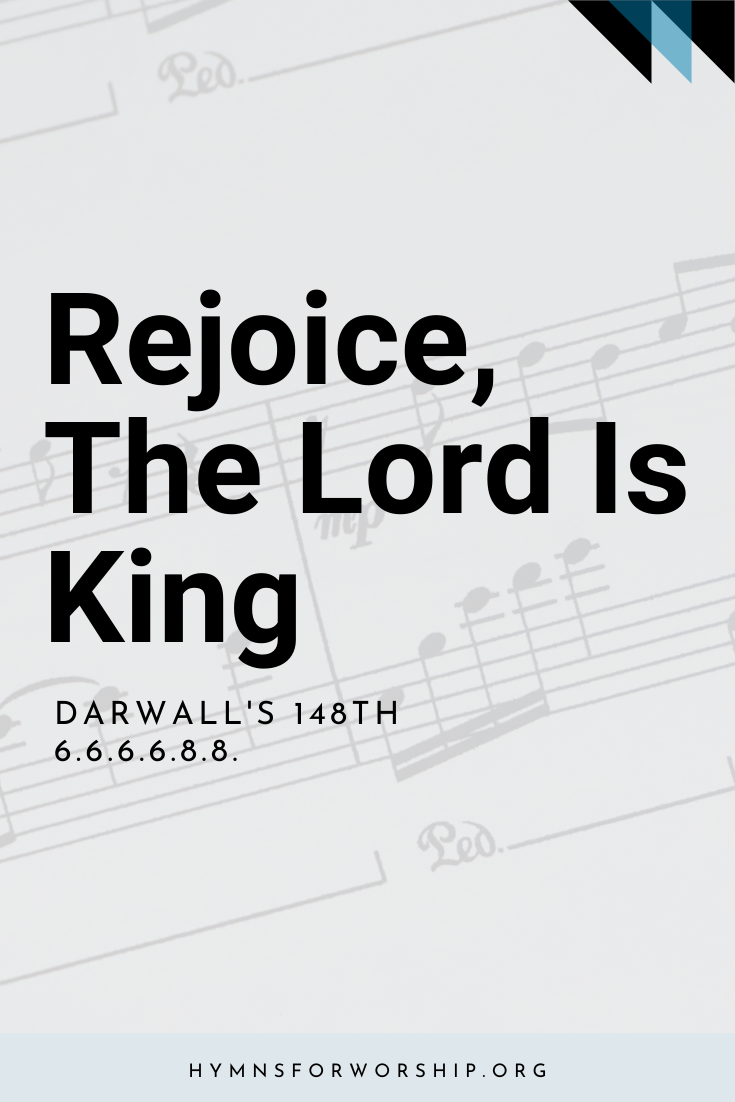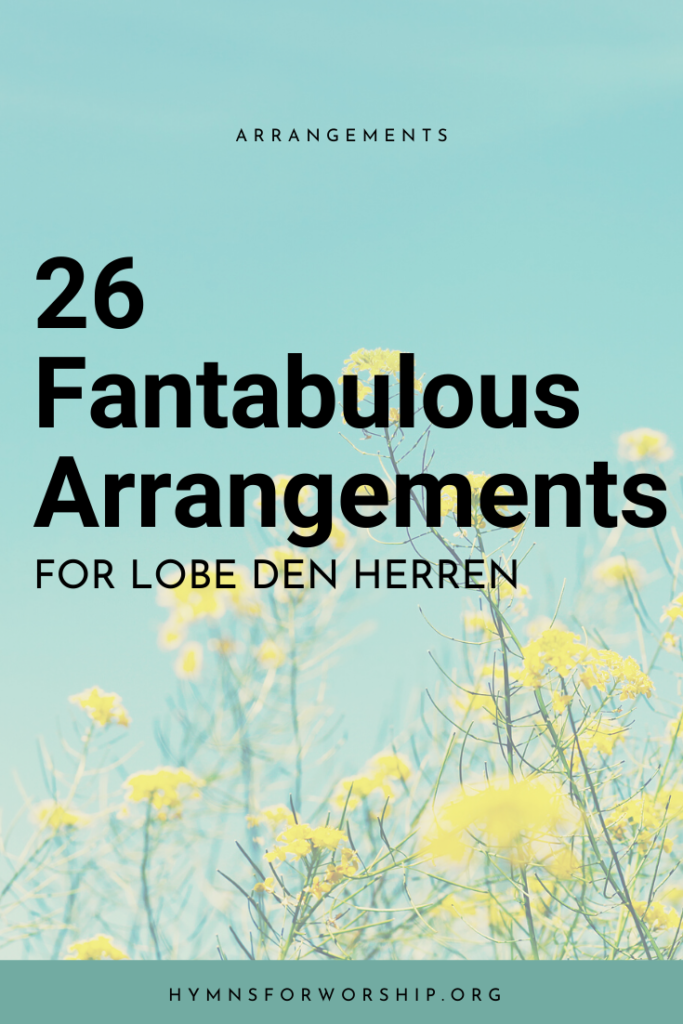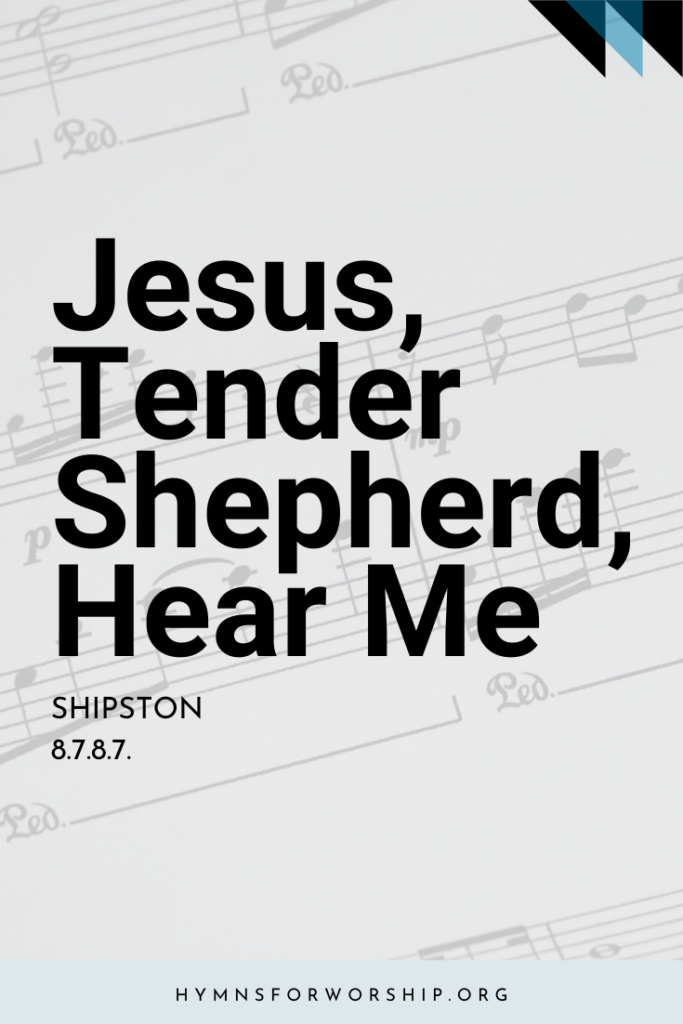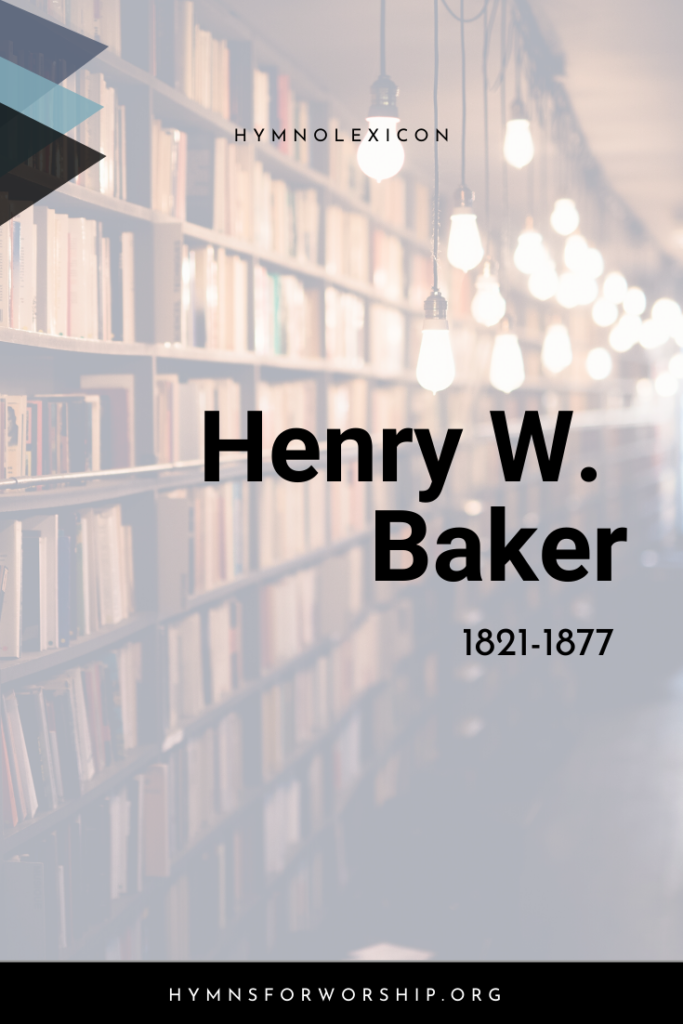JESUS CHRIST >> SECOND ADVENT
SDAH 221
Rejoice, the Lord is King! Your Lord and King adore!
Rejoice, give thanks, and sing and triumph evermore
Lift up your heart, lift up your voice!
Rejoice, again I say, rejoice!
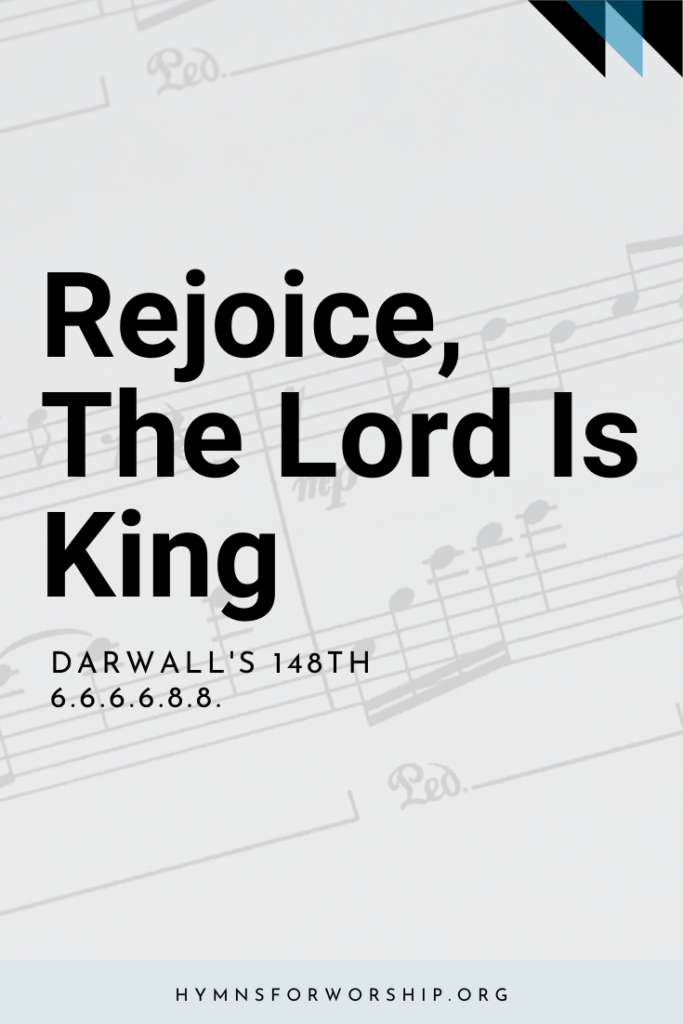

Text
1
Rejoice, the Lord is King! Your Lord and King adore!
Rejoice, give thanks, and sing and triumph evermore
Lift up your heart, lift up your voice!
Rejoice, again I say, rejoice!
2
Jesus, the Savior, reigns, The God of truth and love;
When He had purged our stains, He took His seat above
Lift up your heart, lift up your voice!
Rejoice, again I say, rejoice!
3
His kingdom cannot fail, He rules o’er earth and heaven
The keys of death and grave Are to our Jesus given
Lift up your heart, lift up your voice!
Rejoice, again I say, rejoice!
4
Rejoice in glorious hope! Our Lord the judge shall come,
And take His servants up To their eternal home
Lift up your heart, lift up your voice!
Rejoice, again I say, rejoice!

Hymn Info
Biblical Reference
(a) Ps 97:1; Phil 4:4 (b) Rev 3:21 (c) Rev 1:18 (d) 2 Tim 4:1
Author
Charles Wesley (1707-1788)
Hymn Tune
DARWALL’S 148TH
Metrical Number
6.6.6.6.8.8.
Composer
John Darwall (1731-1789)
Theme
SECOND ADVENT
Hymn Score
Piano Accompaniment
Recommended Reading
Charles was the other Wesley. Alongside his brother John who was considered the main guy behind the founding of Methodism, it was Charles’ hymns that pushed through the envelope of being “just another religion.” His lasting and well-known hymns have captivated Christians all around the world. Through his poetic lines, we are able to sing many hymns with such deep theology.
It was said that he wrote 8,989 hymns. That’s 10 lines of poetry every single day for 50 years. And we are privileged to have sung some of those hymns. Tell me, don’t these hymns ring a bell for you?
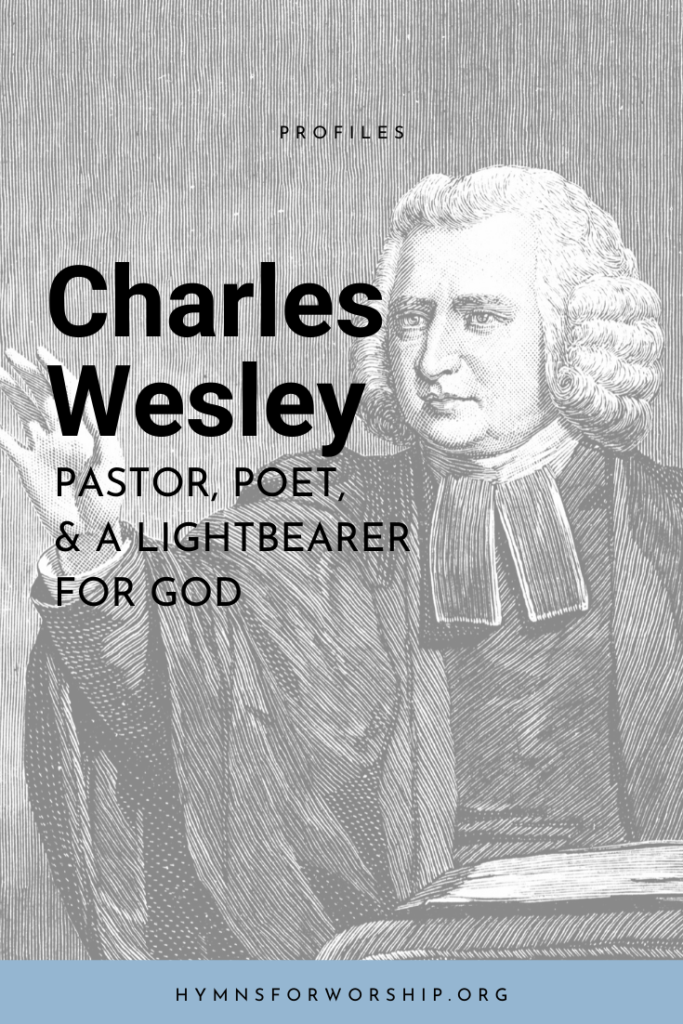
Notes
Get to know the hymns a little deeper with the SDA Hymnal Companion. Use our song leader’s notes to engage your congregation in singing with understanding. Even better, involve kids in learning this hymn with our homeschooling materials.
Let us lift up our hearts, lift our voices and sing. From one Sabbath to another Sabbath throughout all eternity, all who will be in the new heavens and the new earth will rejoice because Jesus Christ our Lord is King. (Lesson 13, 1st Quarter 2021 -Thursday, So Shall Your Seed and Your Name Remain, 3/25/2021)
Lift up your heart. Lift us your voice. Yes, be ye lifted up above all people because Jesus Christ the Lord is your king. (Lesson 6, 2nd Quarter 2021 -Sunday, Above All Else, 5/2/2021)
This hymn by Charles Wesley (1707-1788; see Biographies) was written in 1744 and first appeared in John Wesley’s Moral and Sacred Poems. It was republished by Charles in the Hymns for Our Lord’s Resurrection, with six stanzas. Each of these stanzas concluded with the exultant refrain of rejoicing, but Wesley concluded his last stanza with the stirring couplet:
We soon shall hear the Archangel’s voice, the trump of God shall sound, rejoice. This is one of three Wesley hymns for which Handel wrote tunes. GOSPEL, which he composed for this text, is not included in SDAH. When Samuel Wesley discovered these tunes he said, “My dear Father’s poetry must have highly delighted Handel.”
At the Wesley Museum, Lake Junaluska, North Carolina, is a book titled Hymns on the Great Festivals and Other Occasions, London, 1746. It contains a number of Wesley’s hymns in poem form; the first stanzas are within the music, which was composed by John F. Lampe. Hymn No. 8, headed “On the Resurrection,” is “Rejoice, the Lord is King” (see reproduction on page 264). Lampe’s style was florid and difficult to sing (notice the grace notes reveres dotted rhythms. And a melodic leap of and octave and a third), but the Methodist of that day loved and sang them. DARLWELL’s 148TH, named for the composer and the psalm for which he wrote it, “Ye Boundless Realms of Joy,” was first used in Aaron William’s New Universal Psalmist, 1770. The original, in two parts, melody and bass, was in the key of D and the beginning note of the melody was A. It seems to be the only tune from that psalter that has survived. The unusual meter, 6.6.6.6.8.8., was called the “Hallelujah Meter” in some early American hymnals because of its exuberance and joyfulness.
Erik Routley (see SDAH 571) says this is one of those rare cases where “discreet editorial assistance and liberate qualities slightly obscures in an original.” In this case the tonic was substituted for the fifth at the beginning, and a more contrapuntal bass was provided. That has made this tune, as Routley says, one of the best loved tunes. SDAH also uses this for No. 377, “Go Forth with Christ.” Note the arpeggio in the first line of the melody, the descent of the seven successive notes of the scale as line 1 merges with line 2, and then the ascending octave plus one note beyond in lines 5 and 6.
John Darwall was born in the village of Haughton, Staffordshire, England, in January 1731. As Oxford graduate, he served as curate, then 20 years as vicar, of St. Matthew’s Church, Walsall, where this tune was first sung on Whitsunday in 1713. He died there on December 18, 1789. As an amateur musician, he wrote two volumes of piano sonatas, hymn texts, and tunes and composed music for all 150 psalms in part-two harmony.
-from Companion to the Seventh-day Adventist Hymnal by Wayne Hooper and Edward E. White

